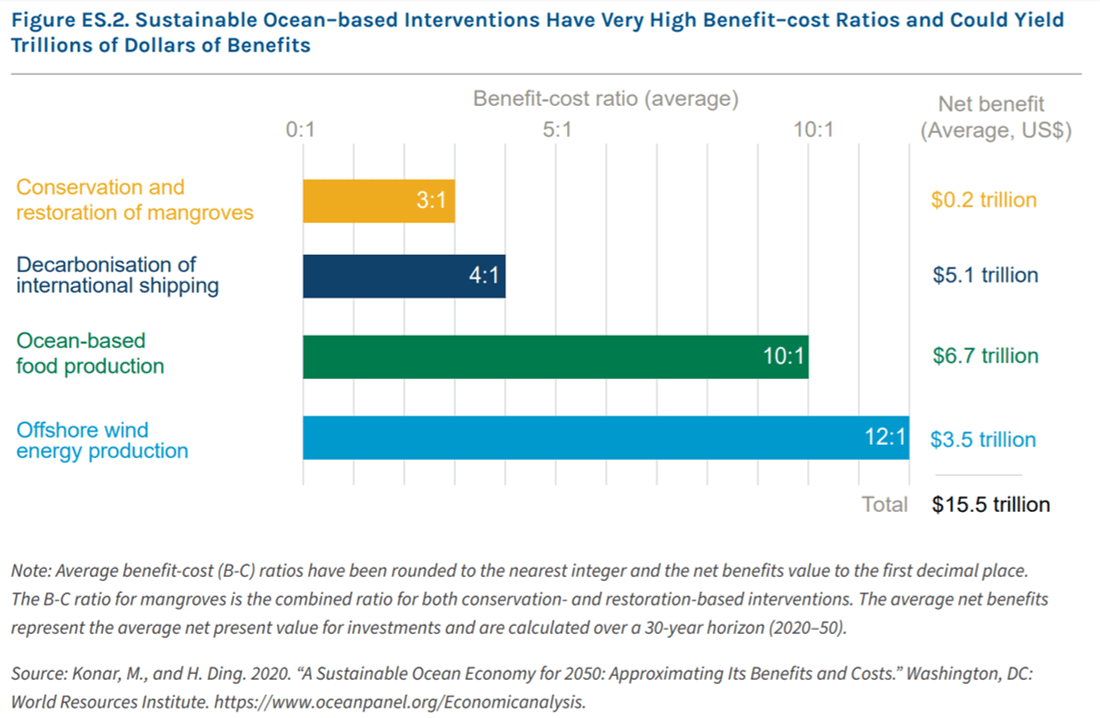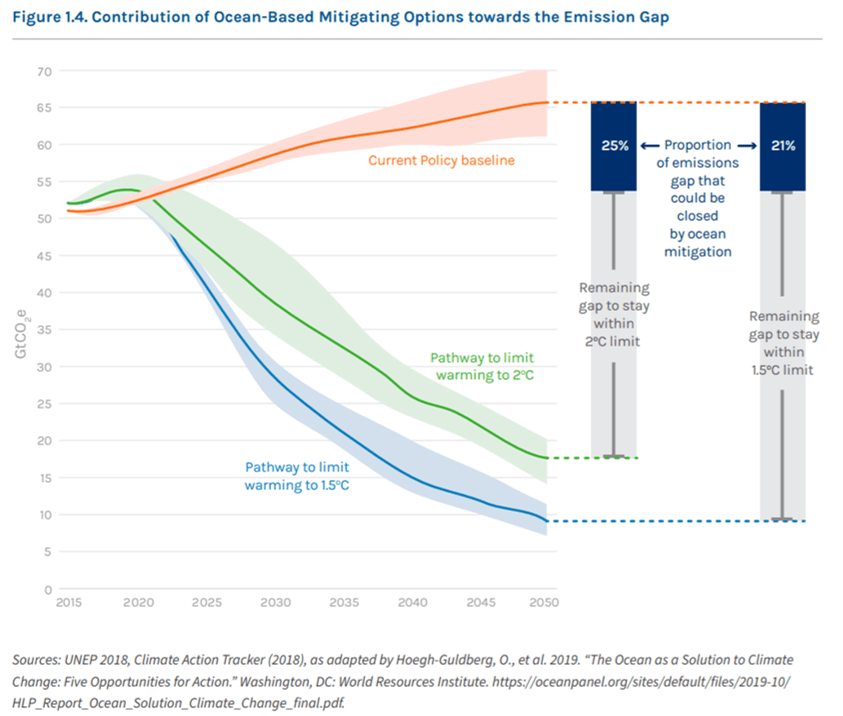How Do Mangroves Fit into Ocean Solutions?
Recommendations from The High Level Panel for a Sustainable Ocean Economy
You may not consider mangroves as part of the ocean, but the coastal, salt-tolerant, trees support a vibrant ecosystem that is highly connected to tropical and sub-tropical ocean regions worldwide. Seagrass and coral reef ecosystems depend on mangroves as a shelter for juvenile fish and to hold back sediment and nutrients that would otherwise smother the underwater systems. Without mangroves, the ocean would be a much emptier place!
Mangrove’s vital connection to the ocean couldn’t be clearer when reading through the newest report from The High Level Panel for a Sustainable Ocean Economy, a group of representatives from 14 countries around the world dedicated to protection and sustainable use of the ocean and its resources through global policy change. The report, titled “Ocean Solutions that Benefit People, Nature and the Economy,” addresses how the ocean and its ecosystems, including mangroves of course, are being under-utilized as a tool to help mitigate climate change, protect people, and source resources for livelihoods.
The following quotes are from the executive and full report and present the panel’s view of mangroves’ strengths and how the coastal forests fit into the larger ocean agenda.
Coastal habitats, such as mangroves, provide protection for hundreds of millions of people, nurture biodiversity, detoxify pollutants flowing off the land, and provide nursery areas for fisheries, increasing the supply of food and providing livelihoods. They are also a source of revenue.
Mangroves and seaweed can provide food, fuel and fiber while mitigating climate change and boosting biodiversity.
Mangroves reduce annual flooding globally by more than 39 percent per year for 18 million people, and reduce annual property damage by more than 16 percent, or $82 billion. Similarly, the value of coastal ecosystems in terms of nursery and habitat for fishes and other marine species, regulation of water flow and filtration, carbon sequestration, and contaminant storage and detoxification has also been calculated for coastal habitats, ranging from $100 to $10,000 an acre.
Investments in a sustainable ocean economy are not just good for the ocean. They represent an excellent business proposition. Investing $2.8 trillion today in just four ocean-based solutions—offshore wind production, sustainable ocean-based food production, decarbonisation of international shipping, and conservation and restoration of mangroves—would yield a net benefit of $15.5 trillion by 2050, a benefit-cost ratio of more than 5.

Figure ES.2 from the Oceans Solutions Report
Key coastal habitats such as mangroves are being lost at an alarming rate: global mangrove cover has declined by around 25–35 percent (up to about 57,000 km2 from 1980 to 2000), largely due to land reclamation and conversion to aquaculture ponds and rice paddies. This loss has resulted in reductions in fisheries and coastal food production, and increasing threats to species with a fragile conservation status. These coastal habitats help protect communities against life-threatening storm surge during tsunamis, typhoons, cyclones and hurricanes. Mangroves, sea grasses and saltmarshes are labelled ‘blue carbon’ ecosystems because they actively sequester and store organic carbon from the environment, meaning their loss increases emissions
Currently, [ocean-based] solutions are delivering significantly less than their full mitigation potential…Alarmingly, not only is the carbon sequestration and storage potential of coastal and marine ecosystems not fully being captured through efforts to protect and manage these ecosystems but the degradation and loss of these ecosystems—mangroves at 0.21 percent per year, saltmarshes at 1–2 percent per year and sea grass at 2–5 percent per year—is releasing significant emissions back into the atmosphere.

Fig 1.4 from the Oceans Solutions Report
The 2019 UN emission gap report states that the world is currently on course for 3.2°C global warming over pre-industrial levels—presenting a stark contrast to the 1.5°C limit now commonly recognized as critical for ocean health. Establishing a regenerative ocean economy, focused on restored and protected ‘blue sinks’ (e.g. mangroves, sea grass, saltmarshes) and zero- or low-carbon production of food, energy and transportation, is essential to that goal.
In a 2050 sustainable ocean economy, the economic value of restoration of ocean and coastal natural capital would be recognized and turned into action, with carbon finance and coastal protection funds playing a major role in large-scale restoration projects. Restored and protected natural blue assets would then be able to deliver ecosystem services for coastal populations, especially in ensuring human safety by helping to mitigate the impacts of storms and sea level rise. For instance…a study has found that a ‘100-meter-wide belt of mangroves can reduce wave heights between 13 and 66%, and up to 100% where mangroves reach 500 meters or more in width’.
Read the report here for more in depth solutions as well as a feature of Kenya’s innovative Mikoko Pamoja carbon-credit mangrove project on pages 18-19.